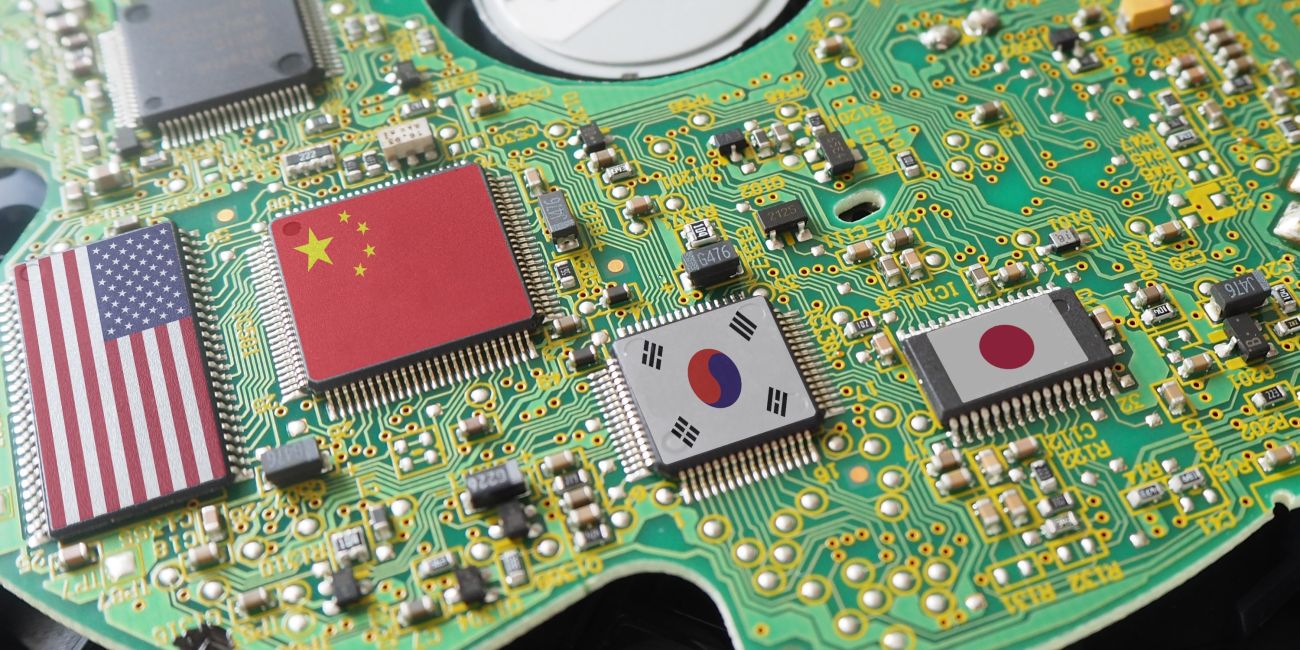Understanding US Chinese Semiconductor Restrictions
The global semiconductor industry can safely be called the new gold rush, as the demand for more advanced technology and production in higher volumes seems to have limitless momentum. Any country with an established semiconductor manufacturing and development industry has a distinct technological and economic advantage. It is for this reason, that the semiconductor industry has become the frontline of a new economic and technology-based battleground. It is no surprise that the two largest economies in the world, the United States and China, are competing to control the design and manufacturing of new semiconductor technologies. Thus, raising the stakes of this race and leading to increased tensions across the globe.
These tensions reached a new high last year with the US implementing chipmaking restrictions on China, limiting the export of certain types of semiconductor technology to Chinese companies. As stated by Dorsey & Witney “These new EAR export controls are part of a larger U.S. policy trend aimed at inhibiting China's technological growth and limiting China's use of electronic manufacturing capabilities to bolster its military or other security forces.” These restrictions cover a wide range of technologies including advanced semiconductors, software, and telecommunications equipment. US sellers face increasing challenges in their efforts to export cutting-edge technologies to China due to the difficulty of obtaining the necessary certifications and licenses.
US Department of Commerce restrictions have had a significant impact on China's semiconductor industry which is heavily reliant on foreign technology. Chinese companies have struggled to obtain the advanced chips they need to manufacture and assemble high-end products, and the restrictions make it more difficult for Chinese companies to compete in the fast-moving global market. China responded to US restrictions by investing heavily in domestic technology development, including the development of homegrown semiconductor technology. China is also pursuing partnerships with other countries such as Russia and several other European nations to gain access to the advanced semiconductor technology they need to stay competitive.

China's attempts at partnership are complicated by US restrictions and foreign policy. These complications have been compounded as the US has called on its European allies, as well as other nations such as Japan and South Korea to join them in adhering to these restrictions. To date, Japan and the Netherlands (Europe’s semiconductor manufacturing powerhouse), have joined the US initiative with South Korea expected to follow. While Russia may be inclined to partner with China their capacity to impact real change has been immensely diminished through the past year of trade embargos that the country has been hit with because of the Ukraine invasion.
To fully comprehend why China needs foreign technologies, it is important to understand the context of recent developments. While there are many skilled engineers and designers in China, some experts argue that the industry as a whole has been slow to innovate. Many Chinese companies focus on producing low-cost, high-volume products, rather than investing in research and development to create more advanced or innovative products. The COVID-19 pandemic also highlighted the Chinese electronics industry's dependence on global supply chains. When supply chains were disrupted due to the pandemic many Chinese companies were heavily impacted, leading to delays and the shortages experienced worldwide in the electronic component supply chain. This raised concerns about China’s manufacturing and supply chain resilience in the face of future disruptions.
There are several other key issues slowing Chinese semiconductor growth:
-
Labor costs in China have been rising steadily over the past few years, making it more expensive for companies to operate in the country. This has led some manufacturers to move their operations to other countries with lower labor costs
-
The Chinese government has introduced stricter environmental regulations in recent years, which have impacted the PCB manufacturing industry. Some manufacturers have struggled to comply with the new regulations, which has led to a slowdown in production.
-
Increased competition has arisen in the global electronics manufacturing market, particularly from countries such as Taiwan and South Korea. This has put pressure on Chinese manufacturers to improve their technology and quality standards to remain competitive, a challenge magnified by the US restrictions.
The situation continues to escalate as the US is looking to limit access of Chinese chipmakers to wafer fabrication equipment that can be used to manufacture chips on 40nm-class process technologies and below. If these restrictions are imposed, and no export licenses to sell advanced chipmaking tools to Chinese chip makers are granted, this could set back the Chinese semiconductor industry by at least a decade. Meanwhile, the Dutch government has placed export restrictions on a number of lithography equipment items, another blow to China due to the specialized nature of this equipment and the Netherlands’ domination of this market.
It is difficult to predict what long-term effects these new trade restrictions and national security protocols will have on the Chinese semiconductor industry, or on the global economy as a whole. The coming months will prove to be crucial, as the US tries to secure commitments from more countries to implement export restrictions against China and encourage those with restrictions in place to further tighten them. The issue is as complex as it is contentious and affects the market as a whole as well as both parties who until recently had greatly benefited from their interconnected industries. Unfortunately, this is uncharted territory for the global economy and as the new gold rush of semiconductor technology continues to gain momentum tensions seem to have no indication of easing.









